Basil diseases and ways to combat them
Basil often exposed to fungal diseases. Pathogenic pathogens seriously affect the vascular system of the plant and destroy the bulk of the crop. The main reason for this phenomenon is improper care or its complete absence. From the article you will learn about common diseases of basil and see photos with signs of damage.
Basil diseases and their control
The main diseases include yellowing and curling of leaves, and fungal infections. Beginners rarely recognize one species or another, since some symptoms are identical.
Fusarium
This is a fungal infection that occurs due to high temperatures and high humidity. The causative agent is the fungus Fuzaria. It thrives in greenhouses, greenhouses and open ground, especially when basil grows on its own, without proper care.
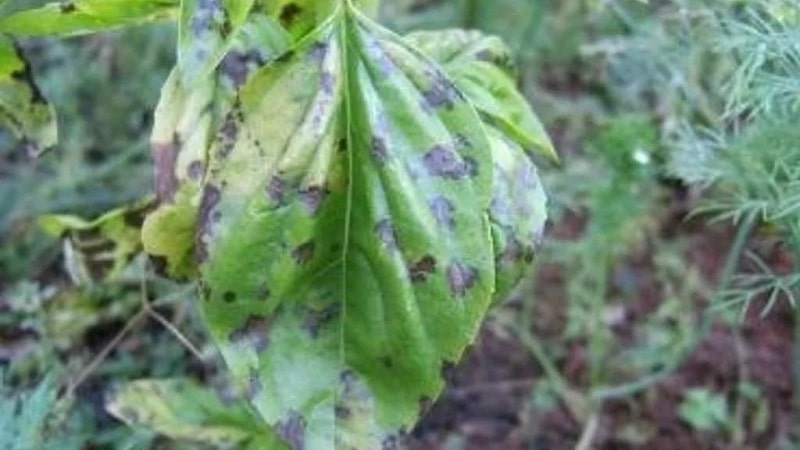
With fusarium, the surface of the leaf blade is covered with black and dark brown dots. The leaf gradually becomes thinner, turns pale and yellow. Young basil turns purple.
Lack of treatment results in darkening, curling and drying of the leaves, after which the bush dies.
The fungus is eliminated only in the early stages with the help of fungicides “Impact”, “Merpan” and folk remedies, for example, infusion of onion peels. In advanced cases, plants are removed and destroyed.
Blackleg
The development of this fungal infection is provoked by the following factors:
- abundant watering - waterlogged soils are favorable for the development of mold;
- lack of loose soil - the formation of a crust on the surface of the earth and the accumulation of moisture at the roots of plants provoke the proliferation of the fungus;
- increased soil acidity.
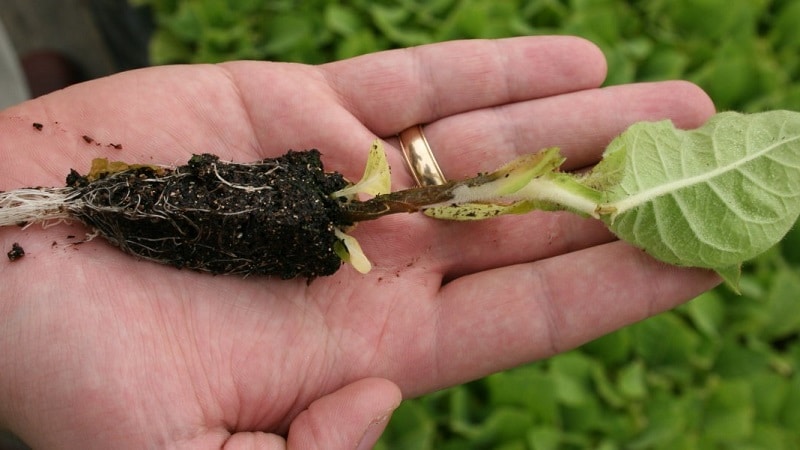
When affected by blackleg, the base of the stem becomes soft, thin and black. The leaves curl and dry out. Gradually the basil dies.
Blackleg cannot be treated, so infected bushes are burned. The soil is treated with formaldehyde or a weak solution of potassium permanganate. The remaining basil is disinfected with “Fitosporin” or “Topaz”.
Reference. Experienced gardeners say that purple basil is rarely affected by black stem, unlike green basil.
Gray rot
The fungus Botrytis cinerea is found in greenhouses and greenhouses, so it rarely affects basil in open ground. The reason for the appearance of the pathogen is accumulated condensation due to lack of fresh air, plant residues and moisture.
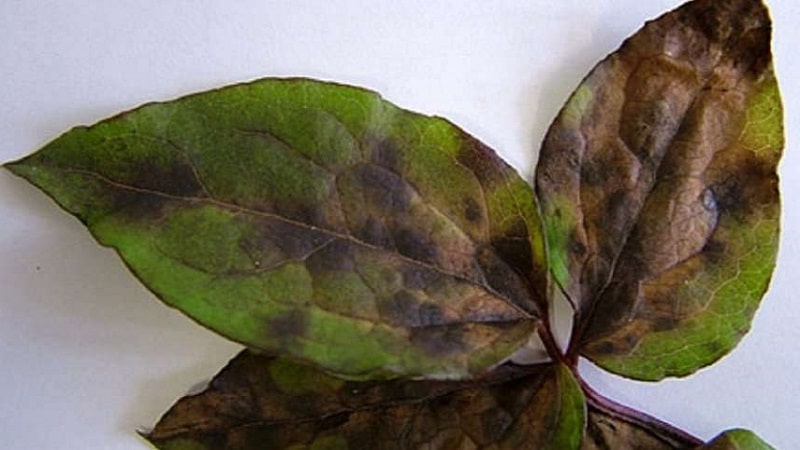
Brown, yellow and gray spots appear on the lower leaves. Then the affected areas gradually become moist and a gray coating forms on them. The fungus spreads more intensely, covering the stem and top. Basil withers, turns yellow and dies.
Important! Methods of combating gray mold with modern drugs are meaningless. Experienced summer residents prevent the appearance of this fungus by following preventive measures: water moderately, do not plant basil in the same place, and do not allow the plantings to become dense.
Yellowing of leaves
Basil often has a sharp leaves color changes from rich green or purple to yellow and gray.
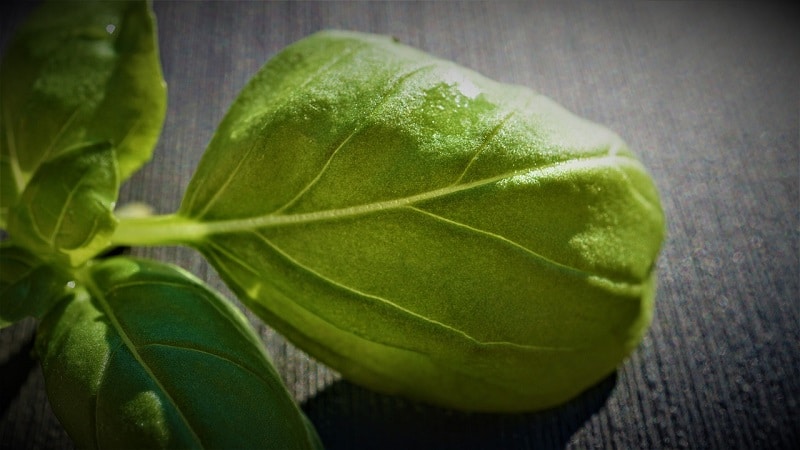
Possible reasons:
- poor soil quality, lack of nutrients;
- root damage seedlings during transplantation in open ground;
- insufficient container volume, which constrains the root system if basil is grown at home;
- the appearance of pests - aphids, bedbugs, snails and slugs, spider mites.
When yellow leaves are detected, gardeners eliminate the root cause. The plants are fed with mineral fertilizers, including nitrogen, magnesium and phosphorus.
Twisting
This problem is observed in large-leaved varieties. The leaves bend inward, forming a roll.
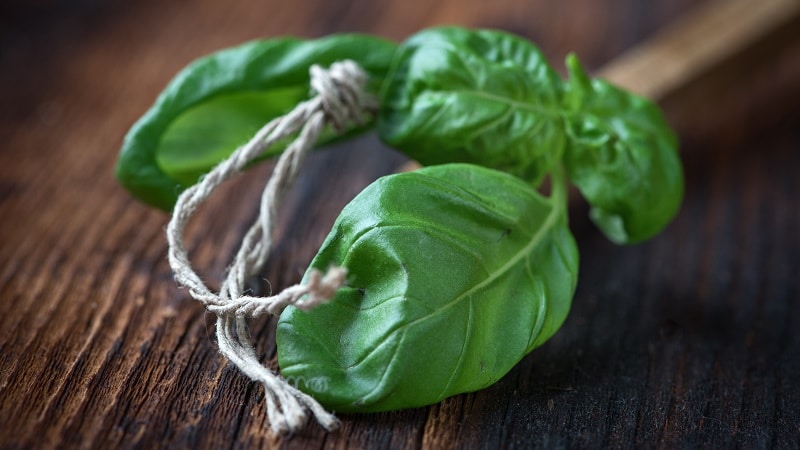
The reasons are the following factors:
- diseases and pests - black leg, peronospora, fusarium, aphids and bugs;
- poor quality care - lack of watering or flooding of the soil, high temperatures, damage to the root system.
Pests are eliminated. Diseases are fought until the basil completely recovers (if we are not talking about gray rot, black leg, fusarium). Review the watering and fertilizing schedule.
Falling off
This phenomenon is rare. Usually leaves fall due to lack of moisture in the soil, which disrupts photosynthesis processes.
The growth of basil slows down, so it becomes unsuitable for consumption. The problem can be solved by frequent but adequate watering.
Preventing basil diseases
Plant diseases are easily eliminated when the basic rules of prevention are followed:
- Disinfection. Before planting, the seeds and soil are generously treated with a solution of potassium permanganate and copper sulfate. If pests were discovered last year, boiling water is poured onto the soil. Only use disinfected instruments.
- Loosening. After each watering and rain, the top of the soil is slightly turned over. At the same time, weeds are removed.
- Fertilizers.Basil is fed once every 2 weeks, alternating organic and mineral components. Before applying fertilizers, the beds are well watered.
- Watering. Greens are saturated with moisture when the top layer of soil becomes dry. Water early in the morning or evening with water at room temperature.
- Mulching. The beds are covered with straw, hay or humus. Mulch ensures good air circulation, prevents moisture stagnation and the appearance of diseases and pests.
- Digging. Before planting basil, dig up the soil, simultaneously removing the roots of the weeds.
- Crop rotation. Every year the spice is planted in a new place. The best predecessors for it are legumes.
Conclusion
In order for basil to develop well and delight with its aroma in ready-made dishes, it is necessary to take into account rules of care: ensure timely watering, fight diseases and pests. It is important to prevent the occurrence of such problems by taking simple preventive measures.